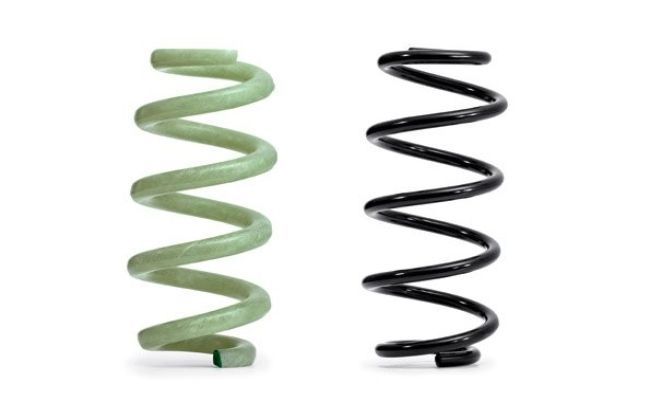Audi soon bringing lightweight springs to production cars
Modified On Jul 10, 2014 05:00 PM By Abhijeet
- Write a comment
Audi will soon bring glass fibre-reinforced polymers instead of steel in suspension systems. The new lightweight construction will make its market debut in the later months of 2014. Audi states that these new springs constructed of glass fibre-reinforced polymer (GFRP) will be equipped in an upper mid-size model before the end of the year. The GFRP spring is a light green coloured fibre thicker than the wire of a steel spring. It has a lighter overall diameter with a lesser number of coils.

The biggest advantage is the 40 percent weight reduction the GFRP achieves. Where a steel spring for an upper mid-size model weighs almost 2.7 kilograms, the GFRP spring with identical properties weighs in at nearly 1.6 kilograms. The four springs add up to a weight saving of 4.4 kilograms. Dr. Ulrich Hackenberg, Member of the Board of Management for Technical Development at AUDI AG, stated “The GFRP springs save weight at a crucial location in the chassis system. We are therefore making driving more precise and enhancing vibration comfort”.
The core of these GFRP springs is constructed of long glass fibres twisted together and impregnated with epoxy resin. A sophisticated machine wraps additional fibres around this core, only a few millimetres in diameter, at alternating angles of plus and minus 45 degrees to the longitudinal axis. These tension and compression plies mutually support one another to optimally absorb the stresses acting on the component. In the last production step, the blank is cured in an oven at temperatures of over 100 degree Celsius.
The GFRP springs can be precisely tuned to their respective task, and the material exhibits outstanding properties. It does not corrode, even after stone chipping, and is impervious to chemicals such as wheel cleaners. Last but not least, production requires far less energy than the production of steel springs. The less weight means the vehicle has to carry around lesser unsprung weight around corners, allowing the driver to extract the most of the chassis. Further the weight savings also add a tiny bit to fuel efficiency as well.















